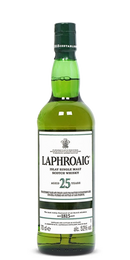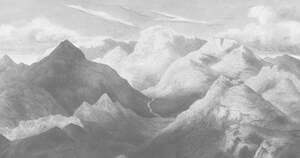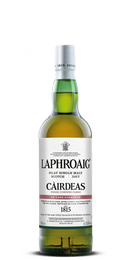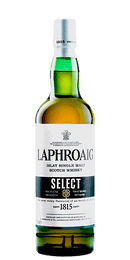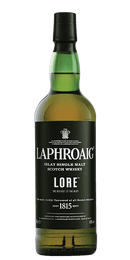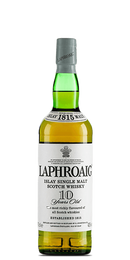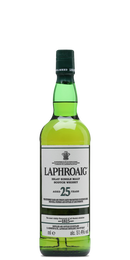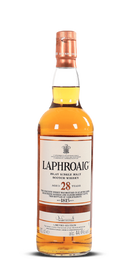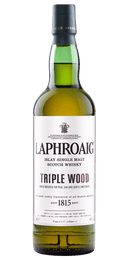All about Laphroaig
Some of the most popular expressions of Laphroaig include: Laphroaig 25 Year Old 2021 Cask Strength Edition, Laphroaig 34 Year Old The Ian Hunter Story Book 4 Single Malt Scotch Whisky, Laphroaig Càirdeas 2021 Edition Pedro Ximenez Casks Single Malt Scotch Whisky, Laphroaig Quarter Cask, Laphroaig Select, Laphroaig Lore, Laphroaig 10 Year Old, Laphroaig 25 Year Old 2020 Cask Strength Edition, Laphroaig 25 Year Old 2019 Edition, Laphroaig 28 Year Old Limited Edition, Laphroaig Triple Wood, Laphroaig Càirdeas Triple Wood Cask Strength.
Members' favorites from Laphroaig
All about Laphroaig distillery
Laphroaig Distillery is located on the south coast of the Isle of Islay, and is named after the area of land at the head of Loch Laphroaig.The distillery was founded in 1815, by brothers Alexander and Donald Johnston. They actually built the site in 1810 and started a cattle farm.
Since the Johnston Brothers were already distilling -- which became very famous in the area since it was more profitable -- in 1815, they officially announced the opening of their very own, "Laphroaig Distillery."
Donald gave up his shares, selling them to Alexander for only £350, and migrated to Australia. He passed away in 1847. And because the heir, Dugald, was just 11 years old, the distillery was taken over by Donald's uncle, John Johnston, and a local farmer, Peter McIntyre.
In 1857, Dugald took over the management with his cousin Alexander. For 20 years they managed the distillery. After the death of Alexander, the distillery was inherited by his sisters, Mrs. William Hunter and Katherine Johnston, and his nephew J. Johnston-Hunter.
The biggest issue during Dugald's and Alexander's period of ownership, was the amount of malts that were being sold to the Lagavulin Distillery for their blends. Mackie and Co. was getting half of the malt from the distillery. Under new management, Laphroaig terminated the deal, which led to some intense court cases.
In 1907, Mackie and Co. diverted the water source from the Kilbride dam, to Lagavulin, leaving Laphroaig without a water source. The courts eventually had to intervene, and rectify the situation. After a tough legal battle, Ian Hunter managed to gain full control of Laphroaig. He decided to increase the distillery's capacity.
Ian Hunter also managed to spread word of his Whisky, throughout the world, most importantly to the USA, during prohibition. He persuaded the officials that the "Iodine" aroma surely meant that Laphroaig had medicinal properties.
In the 1930s, a woman named Bessie Williamson got a summer job at the distillery. That job lasted 40 summers, and she became the manager, after Ian, in 1954. In 1967, Seager Evans bought the site and in 1975, Whitbread & Co bought Seager Evans.
Another change of hands happened in 1983, when Allied Distillers bought the spirit division of Whitbread. Nearly 10 years later, Prince Charles gave the Royal Warrant to Laphroaig in 1994, which was definitely a moment of glory for the distillery.
In 2005, Fortune Brands bought the distillery and the last takeover took place in 2014, when Beam Suntory took control. Laphroaig also recently celebrated their 200th birthday in 2015.
The water used to manufacture Laphroaig Whisky is drawn from the Kilbride dam. There are 3 wash and 4 spirit stills in the distillery. The wash stills have a capacity of 10,900 liters, and the spirit stills have capacities of 3,640 and 7,280 liters.
The stills have flat bottoms, with narrow intermediate sections to increase the interaction between the spirit and the still. Lagavulin has actually tried to imitate the shape of these stills in the past. Floor malting is still used for a portion of the production, and 80% of the maltings are sourced from Port Ellen maltings.
The malts are heavily peated. At least 90% of the barrels used in Laphroaig are American white oak, first fill Bourbon barrels. The distillery buys these barrels from the famous American distillery, Maker's Mark.
Laphroaig uses Quarter Cask barrels, Spanish Oloroso and Pedro Ximenez barrels, and barrels made of Quercus Alba oaks in maturation.
Distillery info
- Country: United Kingdom
- Region: Islay
- Address: Laphroaig Distillery Port Ellen Isle of Islay Argyll PA42 7DU United Kingdom
- Phone: +44 1496 302418
- Website: www.laphroaig.com/


